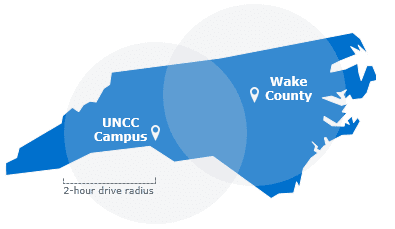3 challenges in building rural relationships (and how to overcome them)
Colleges and universities across the country have both mission- and business-based reasons to push for an increasingly diverse student body—and one group of interest is rural students. However, universities and colleges encounter challenges when trying to make inroads in rural communities and connect with prospective students. In particular, colleges and universities face challenges regarding staff time, distance, and the costs of travel.
Challenge 1: Lack of brand affinity
Your institutional brand may not have the same meaning or power in some parts of the state. Therefore, it’s important to transform the singular brand identity into a series of interpersonal connections between individuals and communities.
A winning strategy to overcome this barrier is to have a person or small group of people as the face of your outreach efforts in specific communities. Designating representatives who repeatedly handle communication with rural partners helps build social trust and makes the entire institution more approachable.
Some schools, such as land-grant universities, are better equipped to do the relationship-building work through their extension offices. But any institution that hopes to serve its region’s rural students will need to use its staff resources to help build personal connections and brand affinity.
We’ve had multiple cases where just having our regional recruiter go into a school and ask where she can help has led to being invited to parent programs and career education days. Having her there means she can say yes more often, building that critical relationship with rural educators.
Director of Admission
Medium Public University
Challenge 2: Recruitment resources with high ROI are unclear
Your reach will certainly be limited by the geographic realities of your campus and state. It’s not feasible to drive eight hours to the other side of your state for a 45-minute career fair in a small town, but these are precisely the types of events you probably wish you could attend far more often.
Some enterprising enrollment leaders are making use of strategically placed recruiters or other university staff that are positioned to help the school reach all corners of its state more effectively. For example, University of North Carolina at Charlotte (UNCC) has placed its first regional recruiter in Wake County, which sits in the eastern part of the state several hours from campus. This county is a major feeder, which helped justify the cost of the recruiter, but it also positions UNCC to be able to reach much more of the state’s students without excessive staff travel time.

Challenge 3: No consistent presence beyond recruiting activities
To make inroads and forge relationships, you must become a regular and reliable part of the regions you serve. Below are two recommendations for how you can engage with rural communities beyond recruiting activities.
- Recommendation 1: Attend as many of the important community events and festivals that you can. Your school’s presence will help forge relationships and maintain ongoing conversations with students and families.
- Recommendation 2: Bring on-campus pursuits into the rural areas you serve. These could be concerts and performances, research that benefits the communities themselves, athletic scrimmages, or any other activity that happens on campus that you wish to share with these communities.
More Blogs

AI visibility is critical when competing for student enrollments

Demographics shape the enrollment landscape, but strategy determines success
